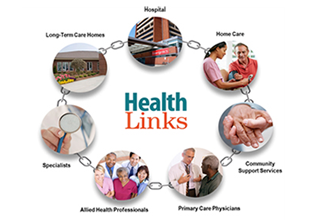Letter - Accessibility for Ontarian's with Disabilities Act
To: All Employees & Physicians
This letter is to inform you about the Accessibility for Ontarians with Disabilities Act (the “Act”). The Act was passed in 2005 and the intention is to make Ontario completely accessible by 2025. There are five standards that are outlined in the Act: customer service; the built environment (building and structures); employment; information and communications; and transportation. The first standard that is required to be met under this legislation is the Accessibility Standard for Customer Service which is intended to ensure that individuals with disabilities will receive fully accessible, high quality customer service. All organizations that have more than one employee were required to comply with this standard by January 1, 2012.
Failure to adhere to the Accessibility Standard for Customer Service will result in financial penalties for the Physicians and the Couchiching Family Health Team. Our organization has rolled out new policies, procedures and training for all employees in order to report compliance which started June, 2012. The policies, practices and procedures for providing compliant customer service are outlined below.
A policy that complies with the Accessibility Standard for Customer Service has been created by the Physicians and the Couchiching Family Health Team and outlines: the provision of goods and services to persons with disabilities; the use of assistive devices; the use of guide dogs, service animals and service dogs; the use of support persons; notice of service disruptions; customer feedback; training; and the notice of availability and format of documents.
In order to comply with the Accessibility Standard for Customer Service, the Physicians and the Couchiching Family Health Team will develop strategies that consider people and take into account individual disabilities. People will be able to use their own personal assistive devices when accessing the company’s goods and services, and in the event that the assistive device presents a safety concern or where accessibility might be an issue, the Physicians and the Couchiching Family Health Team will develop additional measures to enable access of goods and services by the person.
People with disabilities will also be able to be accompanied by a guide dog, service dog and/or service animal unless prohibited by law. If the animal is prohibited by law, the Physicians and the Couchiching Family Health Team will take reasonable measures to ensure the person has access to the goods and/or services required. Anyone that requires the assistance of a support person may be accompanied while accessing the goods and services of the Physicians and the Couchiching Family Health Team.
The Physicians and the Couchiching Family Health Team will also develop a process for accepting customer feedback, including how it will be recorded, responded to and handled. Information will be made available to people about the company’s feedback process. All employees of the Physicians and the Couchiching Family Health Team who are involved in the development and approval of customer service policies, practices and procedures will be trained on the required provisions.
If you require any further information about the Accessibility for Ontarians with Disabilities Act or the Accessibility Standard for Customer Service please contact Lynne Davies at 705-329-3649, ext 201.
How to communicate to people with different types of disabilities:
There are many types and degrees of disability. Accessible customer service is often about finding ways around barriers faced by people.
General tips on providing service to persons with disabilities:
- If you’re not sure what to do, ask the person, “May I help you?” The people with disabilities know if they need help and how you can provide it.
- Speak directly to the person with a disability, not to his or her support person or companion.
- Avoid stereotypes and make no assumptions about what type of disability or disabilities the person has. Some disabilities are not visible and people are not required to give you information about any disabilities they may have.
- Take the time to get to know your person’s needs and focus on meeting those needs just as you would with any other person.
- Be patient. People with some kinds of disabilities may take a little longer to understand and respond. Listen carefully.
- Make an effort to learn about appropriate language and terminology to use when referring to people with disabilities.
- If you cannot understand what the person is saying, politely ask them to repeat themselves.
- Don’t touch or speak to service animals. They are working and have to pay attention at all times.
- Don’t touch assistive devices, including wheelchairs, without permission.
How to interact with people who have vision loss:
Types of assistance people might use:
- Braille
- Large Print
- Magnification devices
- White cane
- Guide dog
- Support person
General Tips:
- Don’t assume the individual can’t see you.
- Don’t touch the person without asking permission.
- Offer your elbow to guide the person. If he or she accepts, walk slowly, but wait for permission before doing so. Lead - don’t pull.
- Identify landmarks or other details to orient people to the environment around him or her.
- Don’t touch or speak to service animals.
- Don’t leave the person in the middle of a room. Show him or her to a chair, or guide them to a comfortable location.
- If you need to leave the person, let him or her know you are leaving and will be right back.
- There is generally no need to raise your voice because the person does not necessarily have a hearing loss. Say your name even if you know the person as many voices sound similar.
- Be clear and precise when giving directions.
- When providing printed information, offer to read or summarize it.
How to interact with people who are deaf, oral deaf, or hard of hearing:
Types of assistance people might use:
- Hearing aid
- Paper and pen
- Personal amplification device
- Phone amplifier
- Relay service
- Hearing ear dog
- Support person such as a sign language interpreter
General Tips:
- Attract the person’s attention before speaking. Generally the best way is by a gentle touch on the shoulder or with a gentle wave of your hand.
- Ask how you can help. Don’t shout.
- Move to a well-lit area, if available, where they can see your face.
- Don’t put your hands in front of your face when speaking. Some people read lips.
- Be patient if you are using a pen and paper to communicate.
- Look at and speak directly to the person. Address the person, not the interpreter or support person.
- Be clear and precise when giving directions and repeat if necessary. Confirm that the person understands you.
- If the person uses a hearing aid, reduce background noise or move to a quieter area, if possible, so the person can hear or concentrate better.
- Don’t assume that the person knows sign language or reads lips.
How to interact with people who have physical disabilities:
Types of assistance people might use:
- Elevator
- Mobility device (wheelchair, scooter, walker, cane, crutches)
- Support person
General Tips:
- Speak naturally and directly to the person, not to his or her companion or support person.
- If you need to have a lengthy conversation with someone in a wheelchair or scooter, consider sitting so that you can make eye contact.
- Ask before you help.
- Respect the person’s personal space. Do not lean over him or her or on his or her assistive device.
- Don’t move items or equipment such as canes and walkers out of the person’s reach.
How to interact with persons who have mental disabilities:
A person with a mental health disability may have difficulty with one, several or none of these:
- Inability to think clearly
- Hallucinations (e.g. hearing voices, seeing or feeling things that are not there)
- Depression or acute mood swings (e.g. from happy to depressed without apparent reason for the change)
- Poor concentration
- Difficulty remembering
- Apparent lack of motivation
Types of assistance people might have:
- Service animal
- Support person
General Tips:
- Treat a person with a mental health disability with the same respect and consideration you have for everyone else.
- Be patient.
- Be confident and reassuring. Listen carefully and work with the person to try to meet their needs.
- If someone appears to be in a crisis, ask him or her to tell you the best way you can help.
How to interact with people who have learning disabilities:
Types of assistance people might use:
- Alternative technology for writing.
- Calculator.
- Scanning or reading technology.
- Tape recorders, mini pocket recorders.
General Tips:
- When you know someone with a learning disability needs help, ask how you can help.
- Speak naturally, clearly and directly at the person.
- Allow extra time if necessary, people may take a little longer to understand and respond.
- Remember to communicate in a way that takes into account the person’s disability.
- Be patient and be willing to explain something again, if needed.
How to interact with people who have a speech or language impairment:
Types of assistance people might use:
- Communication board.
- Pen and paper.
- Speech generating device.
- Support person.
General Tips:
- Don’t assume that because a person has one disability, they also have another.
- Ask the person to repeat information if you don’t understand.
- Try to allow enough time to communicate with the person as they may speak more slowly.
- Don’t interrupt or finish the person’s sentences - wait for them to finish.



